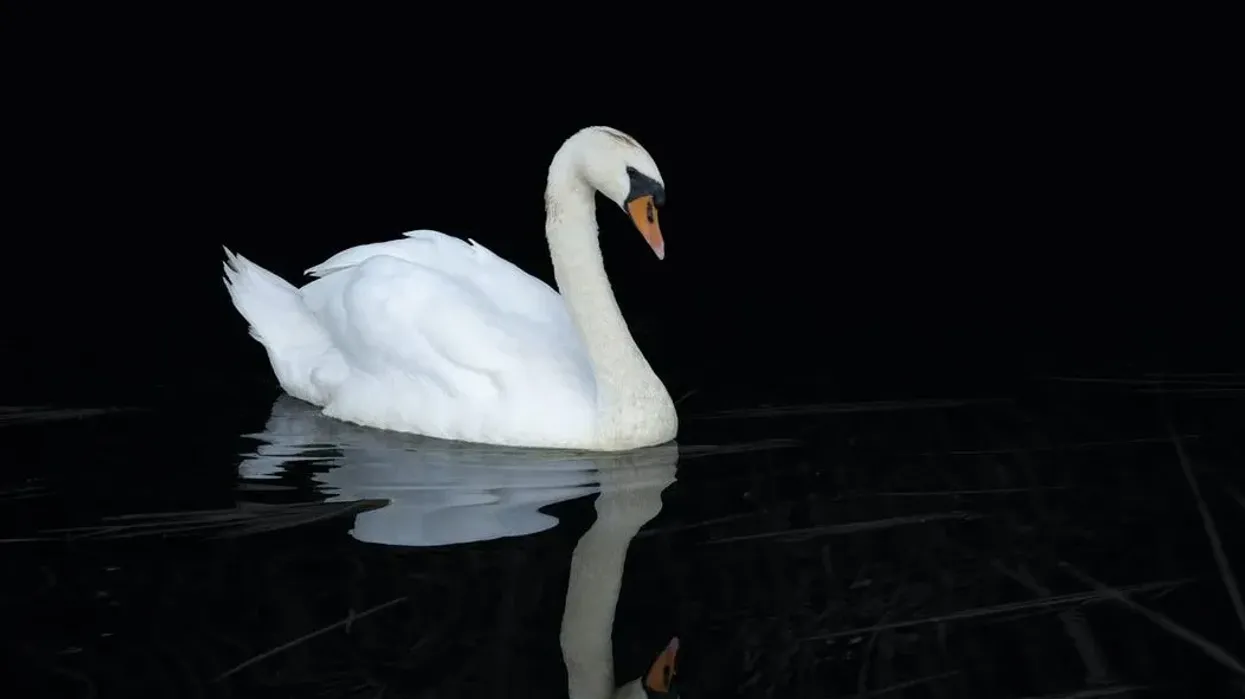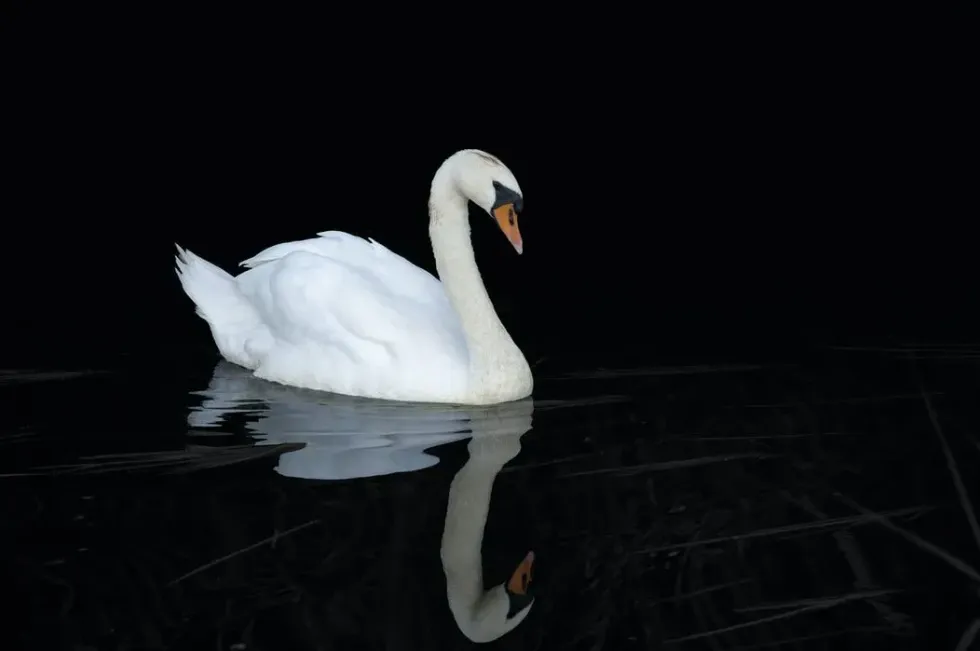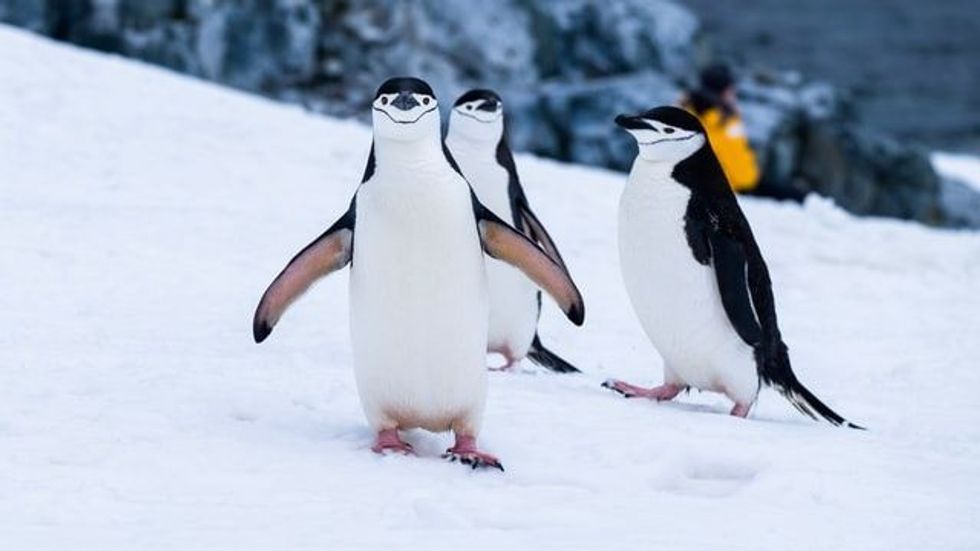Swans (Cygnus) are found across several continents. There are around six species of swans that are living today, while many others have become extinct.
The most common species of swans are the Mute Swan, the Trumpeter Swan, the Whooper Swan, and the Tundra Swan. The white swan is the most common type of swan in the Northern Hemisphere, while in the Southern Hemisphere, the swans are of mixed black and white feathers.
The Black Swan, which is native to Australia, is black in color with a red beak.
Only the flight feathers of the Black swans are white in color, while their cygnets are grey in color. There is another species of swan called the South American black-necked swan, which has a completely white plumage apart from its neck area, which is black, and the color of its leg is pink.
All other types of swans mostly have blackish-grey legs. The male swan is usually larger than the female swan.
Swans were introduced in North America, after which the breeding of swans in North America became very popular and profitable. In the 1800s, swans were introduced in many countries as ornamental birds because of their grace and beauty. Swans are among the largest flying birds.
Many of these species of swans are migratory birds. The swan diet mostly comprises aquatic vegetation and small fishes and worms. The Trumpeter swan can live up to 24 years.
Swans are famously known to mate for life. The female swans lay eggs between April and May. These eggs hatch after 35-41 days.
To find out most such fascinating information about swans, read on! You will find many Trumpeter swan facts, Mute Swan facts, Black Swan facts in this article. You may also like to read facts about the goose and scarlet macaw.
Swan Interesting Facts
What type of animal is a swan?
Swans are large flying birds that are closely related to ducks and geese.
What class of animal does a swan belong to?
The swan belongs to the class of a bird. The scientific name of the Swan family is Cygnus.
How many swans are there in the world?
There are several species of swans that can be found across five continents. The exact number of swans of each of these species is not known.
Where does a swan live?
Swans are usually found in temperate environments. However, they are also found in tropical zones around the world.
What is a swan's habitat?
The swan's habitat includes temperate lakes, shallow ponds, slow rivers, marshes, and wetlands.
Who do swans live with?
Swans usually live with their mates in pairs.
How long does a swan live?
Swans can live for about 10-20 years. The Trumpeter swan can live up to 24 years.
How do they reproduce?
The nesting season for swans usually starts around April and can continue up to July. Female swans lay eggs roughly about two to three weeks after mating.
About 2-10 eggs are laid, which are incubated by both the female and male swans. The eggs hatch after about 35- 41 days. Both the male and female swans incubate the eggs, and once they have hatched, the responsibility of looking after the cygnets is also shared between them.
What is their conservation status?
There are several species of swans that have become extinct. However, the living species of swans have been marked as Least Concern by the IUCN Red List.
Swan Fun Facts
What do swans look like?
There are several species of swans. Tundra swans usually have completely white feathers and a black bill and black feet and legs. The South American Black Necked Swan has a white body with black plumage around the neck and red bills. Mute swans and trumpeter swans also have white plumage.
In fact, mostly all swans of the Northern Hemisphere are white. The Black swan is native to Australia and New Zealand. Swans usually look majestic and graceful with their curved, elongated necks bent in the shape of a heart.
How cute are they?
Swan young ones can be described as cute, while the adult ones are mostly seen as graceful and magnificent. The swan neck is arched beautifully, and a pair of swan are often considered to be a symbol of love.
How do they communicate?
Mute swans communicate with each other in various ways. Mates are known to greet each other with a short snort and bow at each other.
Females also make a 'glock, glock' sound. While they are in groups, mute swans are known to whistle and growl at each other to greet or to communicate. They can also hiss loudly when they sense a threat to their mates or nestings.
How big is a swan?
A swan is a large bird and weighs 8-33 lb (3.6-15 kg), depending on the species of the swan. They are usually larger than geese, ducks, and other birds of the waterfowl family. They are around 4-5 ft (1.2-1.5 m)in height, while the length of their bodies can be measured to have an average of 36-60 in (91.4-152 cm).
How fast can a swan fly?
Tundra swans fly 18-30 mph (28.9-48.2 kph), while Trumpeter swans fly at the speed of 25-60 mph (40.2-96.5 kph). Mute swans are known to fly at an average speed of 55-60 mph (88.5-96.5 kph). Most of the swans migrate at the start of the winter season before the water in the lakes and ponds starts to freeze.
How much does a swan weigh?
Swans are of several different types. Mute swans weigh around 24-25 lb (10.8-11.3 kg), Whooper swans weigh 22-24 lb (9.9-10.8 kg), while Black swans weigh 13-22 lb (5.9-9.9 kg).
What are their male and female names of the species?
Male swans are called cobs, while the female ones are called pens.
What would you call a baby swan?
Baby swans are called cygnets.
What do they eat?
Swans mostly eat aquatic vegetation and small frogs, fish, and worms.
Are they dangerous?
Swans are usually known to be loving, but they can also be fiercely aggressive when the need arises. The most powerful weapons that swans have are their wings and beaks.
They are known to be extremely protective of their eggs, young ones, and partners. So if mute swans detect any potential danger to their offsprings or mates, they become ferocious.
They usually start off their attack with a loud hiss, and if that is not enough to deter the opponent, then they try assaulting them with their beaks and wings. However, they usually do not attack humans unless they feel threatened by them.
Would they make a good pet?
Yes, swans are known to be loving pets. However, you need a big backyard to domesticate swans. You cannot keep them as you would keep a dog or a cat in a closed apartment. The cygnets can live in confined spaces but not the grown swans.
Did you know...
Here are some fun facts about swans that we think you'd love to know.
Mute swans were introduced in North America for breeding so that they could be kept as pets in private lakes. Tundra swans are mostly found in Alaska and the Canadian Arctic region.
Black swans, who are native to Australia, were proclaimed the bird emblem of Western Australia. Black Swans have the same diet and characteristic features as the white ones; they are just smaller in size.
Male swans have a larger body size than female swans.
The fear of swans is quite common in small children and is known as kiknophobia or cygnophobia.
A law passed for the protection of the swans, states that all the swans in England are owned by the Queen, hence hunting or farming of swans is illegal.
Loss of swan habitat due to pollution is a major threat to these majestic birds.
Swans are known to mate for life and are so attached to them that there have been instances of them dying from heartbreak on the death of their mate.
Swans are among the largest flying birds.
The closest relative of the swans is geese and ducks.
A pair of majestic swans with their necks curved in the shape of a heart is said to be a symbol of love and life-long commitment.
Do swans fall in love?
Yes, swans are known to fall in love and mate for life. In fact, swans also tend to bond even before reaching sexual maturity. According to some sources, swans can also die of a broken heart when their partners are dying.
However, instances of divorce have also been noticed. This happens when there is a nesting failure. In some cases, when one of the partners dies before successful nesting, other swans are known to take their place.
Do swans have teeth?
Swans do not exactly have teeth, though they have sharp serrated edges in their beaks that look like small teeth and are helpful in catching small fishes and worms.
How to make an origami swan?
To make a swan that looks like it is swimming, as the legs and feet of the swan cannot be seen, you can follow this link.
Here at Kidadl, we have carefully created lots of interesting family-friendly animal facts for everyone to discover! Learn more about some other birds including golden masked owl, or secretary bird.
You can even occupy yourself at home by drawing one on our swan coloring pages.










